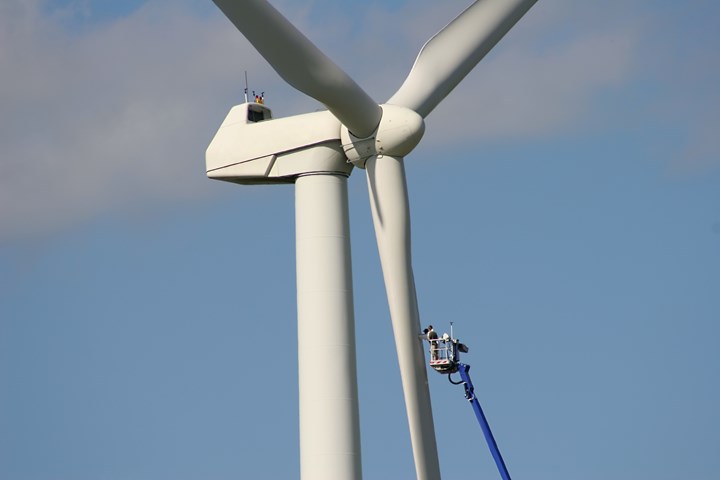Mistras receives patent for Sensoria wind blade monitoring technology
The remote rotor blade monitor offers edge-to-edge intelligence that detects and reports damage in real time, enabling better-informed wind blade integrity management.

Photo Credit: Getty Images
Mistras Group Inc. (Princeton Junction, N.J., U.S.), a “one source” multinational provider of integrated technology-enabled asset protection solutions, has received a U.S. patent (patent #11168668) for the technology behind Sensoria, its 24/7/365 rotor blade monitoring system and sensors that enable blade integrity management for wind turbine owners and operators.
Sensoria is a remote rotor blade monitor that detects and reports damages in real time, including cracks, lightning strikes, skin ruptures and perforations (including those caused by leading-edge erosion), delaminations and more. By sending immediate damage alerts to operators, Sensoria is said to enable them to maximize blade uptime and generating capacity while preventing damages from worsening.
“Wind turbines may be at the forefront of the 21st century energy industry, but the tools available for maintaining them have historically lagged further behind,” says Dennis Bertolotti, president and CEO. “Sensoria bridges this gap and provides value for owners and operators by helping to detect problems before their turbine assets are forced offline and this new patent helps protect the investment we have made in developing this innovative technology.”
According to Mistras Group, Sensoria is also equipped with the company’s acoustic emission (AE) technology, so that it can “listen” for signs of damage before they become visible. Mistra also notes that valuable assets, including bridges, refineries, transformers and iconic structures, depend on its AE technology to help operators make earlier, better-informed integrity decisions.
“Sensoria empowers our customers to operate more productively, cost-effectively and safely,” says Jon Wolk, Mistras Group senior executive vice president and COO. “The combination of our advanced technology, monitoring expertise, and maintenance resources digitalizes the blade integrity management process for our wind energy customers, helping to minimize maintenance costs and maximize uptime.”
Related Content
-
Novel composite technology replaces welded joints in tubular structures
The Tree Composites TC-joint replaces traditional welding in jacket foundations for offshore wind turbine generator applications, advancing the world’s quest for fast, sustainable energy deployment.
-
Recycling end-of-life composite parts: New methods, markets
From infrastructure solutions to consumer products, Polish recycler Anmet and Netherlands-based researchers are developing new methods for repurposing wind turbine blades and other composite parts.
-
JEC World 2023 highlights: Recyclable resins, renewable energy solutions, award-winning automotive
CW technical editor Hannah Mason recaps some of the technology on display at JEC World, including natural, bio-based or recyclable materials solutions, innovative automotive and renewable energy components and more.















